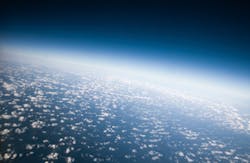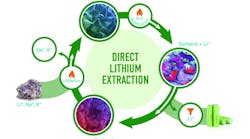There has been an increase in new ozone-destroying chemicals that are not controlled by a United Nations treaty designed to protect the Ozone Layer.
According to a new study published in Nature Geoscience, the atmospheric abundance of one of these "very short-lived substances" (VSLS) is growing rapidly and they are contributing to ozone depletion.
VSLS can be produced from both natural and industrial sources. However, the researchers recorded a significant increase in atmospheric concentrations of dichloromethane, a man-made VSLS used in a range of industrial processes.
They found that although the amount of ozone depletion linked to VSLS in the atmosphere is still small compared to that caused by longer-lived gases, such as CFCs, VSLS-driven ozone depletion is almost four times more efficient at influencing climate. This is because VSLS break down and destroy ozone in the lowest part of the stratosphere.
So far, industrial production of VSLS has not been controlled by the United Nations Montreal Protocol because historically these chemicals have contributed little to ozone depletion, explained study lead author Dr. Ryan Hossaini from the School of Earth and Environment at the University of Leeds.
"But we have identified now that one of these chemicals is increasing rapidly and, if this increase is allowed to continue, it could offset some of the benefits to the Ozone Layer provided by the Montreal Protocol," Dr. Hossaini added.
Study co-author Professor Martyn Chipperfield, also from Leeds' School of Earth and Environment, said: "We need to continue monitoring the atmospheric abundance of these gases and determine their sources. At present, the long-term recovery of the Ozone Layer from the effects of CFCs is still on track, but the presence of increasing dichloromethane will lead to uncertainty in our future predictions of ozone and climate."
Naturally-emitted VSLS still account for most of the total ozone loss caused by VSLS in the lower stratosphere, but the contribution from man-made VSLS compounds is increasing and looks set to increase further in coming years, the researchers said.
Study co-author Dr. Stephen Montzka from the National Oceanic and Atmospheric Administration (NOAA) in the United States commented: "The increases observed for dichloromethane are striking and unexpected; concentrations had been decreasing slowly in the late 1990s, but since then have increased by about a factor of two at sites throughout the globe."
Dr Hossaini concluded: "It is uncertain what is driving this growth. However, it could be partly due to the fact that dichloromethane is used in the manufacturing process of some HFCs, the 'ozone-friendly' gases which were developed to replace CFCs. This would mean, ironically, that production of ozone-friendly chemicals is actually releasing some ozone-destroying gases into the atmosphere."


